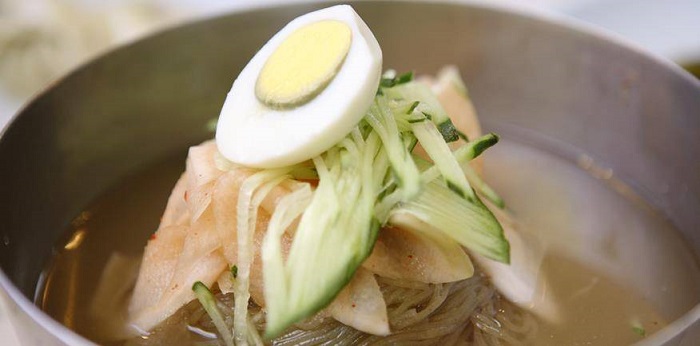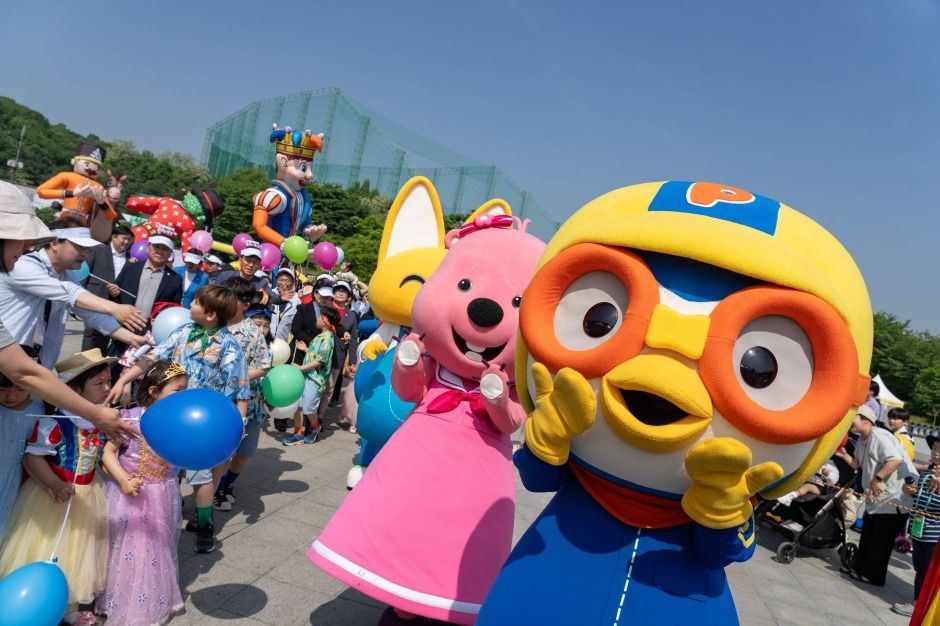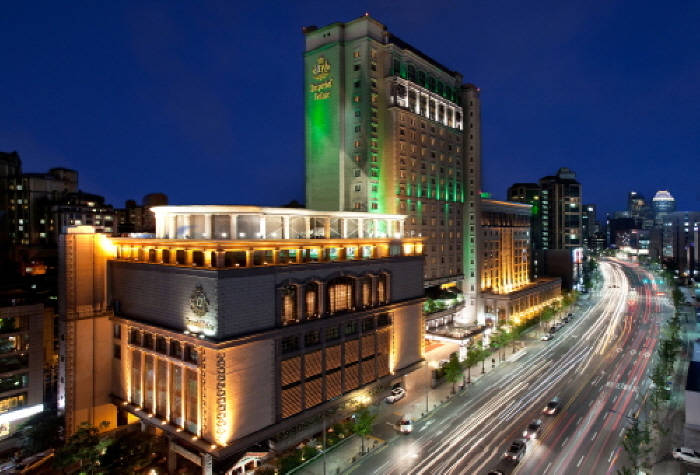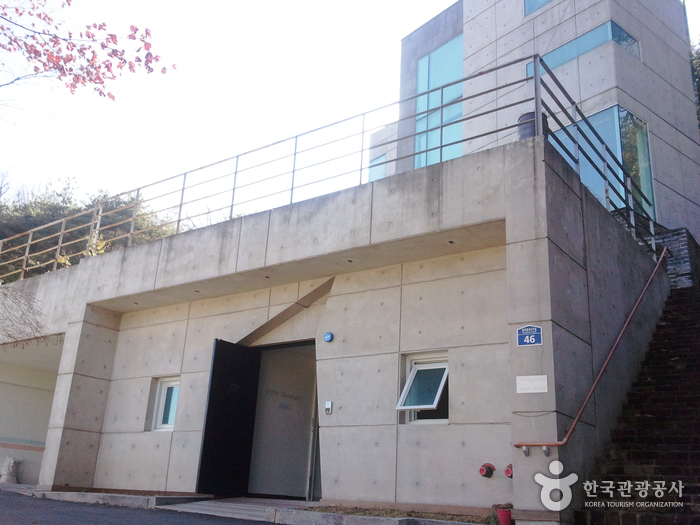Seobungmyeonok (서북면옥)
6.0Km 2021-04-20
199-1, Jayang-ro, Gwangjin-gu, Seoul
+82-2-457-8319
It is a 100-year-old store that has been loved by customers for a long time while maintaining its reputation for over 30 years. This Korean dishes restaurant is located in Gwangjin-gu, Seoul. The representative menu is cold buckwheat noodles.
Universal Arts Center (유니버설아트센터)
6.0Km 2024-03-19
664 Cheonho-daero, Gwangjin-gu, Seoul
Universal Arts Center, inaugurated in 1981, stands as a prominent venue for performances. Renowned for its splendid and classic architectural interior, it is celebrated for its distinctiveness. Its main facilities include the Grand Theater, the Luna Hall capable of accommodating up to 300 guests for banquets, and an audience lounge. It serves as a harmonious space where performance venues, artistic community, and art educational institutions converge. Here, visitors can enjoy a diverse array of performances ranging from ballet and musicals to concerts.
Dongnimmun Gate (독립문)
6.1Km 2022-12-15
251, Tongil-ro, Seodaemun-gu, Seoul
Dongnimmun stands at the location originally known as Yeongeun, where envoys were once treated. When a Chinese envoy visited, the King would go out through this door to greet. In 1898, to announce the independence from Japan, Dongnimun was constructed with the fund collected by the citizens. The traces of the past still remain on Dongnimmun with two pillars in front of Dongnimmun being the remains of Yeongeunmun.
The Arc de Triomphe in France can be recalled in comparison to Dongnimmun. Dongnimmun was built using granite with a passageway x_height of 14.28 meters. On the top it is written ‘Dongnimmun’ in Korean with the national flag drawn on each side. On the inner-left side there are stone stairs leading to the attic. The national flower Mugunghwa are planted around Dongnimmun. Now it is surrounded by roads and it is eye-catching to view when passing by.
Seodaemun Prison History Museum (서대문형무소역사관)
6.1Km 2024-12-02
251 Tongil-ro, Seodaemun-gu, Seoul
Seodaemun Prison was built under the Japanese administration to imprison independence movement activists. It first opened on October 21, 1908 under the name Gyeongseong Prison. Eventually, so many activists were imprisoned that the building had to be expanded. At that time, the name changed to Seodaemun Prison on September 3, 1912. Eighty years later, the prison was turned into Seodaemun Independence Park on August 15, 1992 to commemorate the Korean patriots who were tortured in prison, giving their lives for freedom. Of the many buildings, only seven were preserved for their historical significance, among which three prison buildings and the execution site were designated as a Historic Site. In 1998, the park underwent another transformation into today's Seodaemun Prison History Hall to educate the public on the importance of Korea's independence and the sacrifices of those who fought to achieve it.
Gangbuk-gu Children's Day Festival (강북구 어린이날 대축제)
6.1Km 2025-05-08
173 Wolgye-ro, Gangbuk-gu, Seoul
+82-2-554-9795
Gangbuk-gu Children's Day Festival takes place at Dream Forest in celebration of Children's Day, which falls on May 5. Programs such as a sing-along show, parades, stage performances, interactive games, and a variety of fun rides are prepared to provide a day filled with fun and laughter.
Imperial Palace Hotel (임페리얼 팰리스 호텔)
6.1Km 2021-04-02
640, Eonju-ro, Gangnam-gu, Seoul
+82-2-3440-8000
Imperial Palace Hotel first opened on September 18, 1989, starting as a deluxe hotel and becoming a superior deluxe hotel after 10 years in June 1999. The hotel has remained the pride of the Korean hotel industry thanks to its effective management and improving domestic capital. In 2005, it carried out a large-scale remodeling project to enlarge its size to resemble luxurious European hotels, including a large-sized lobby, convention center that can accommodate over 1,000 visitors, classical wedding hall, and 405 guestrooms. The hotel is part of a chain, along with Imperial Palace Boutique Hotel in Itaewon and Imperial Palace Hotel – Fukuoka in Japan.
Seodaemun Independence Park (서대문독립공원)
6.1Km 2022-12-15
251, Tongil-ro, Seodaemun-gu, Seoul
+82-2-3140-8305
Seodaemun Independence Park was built on the former Seoul Detention Camp. It was used to imprison thousands of Korean independence activists until the liberation from the Japanese occupation on August 15, 1945, as well as the political prisoners during the political turmoil in the 1960s. When the prison was moved to Uiwang-si, Gyeonggi-do in November 1987, the area was restored and turned into a memorial park in August 15, 1992 to honor the sacrifices of the martyrs. The park preserves seven prison buildings, an execution ground, underground women’s prison, and the March 1st Movement Monument that has been moved from Tapgol Park in Jongno.
One of the most significant monuments of the Seodaemun Independence Park is Dongnimmun Gate (Independence Gate), which has been designated a Historic Site. Nearby is Dongnipgwan (Independence Hall), originally called Mohwagwan, which was used to greet Chinese envoys during the Joseon dynasty. Today, the hall enshrines 2,327 tablets inscribed with the names of Koreans who died for the cause of national independence. Standing right next to Dongnimmun Gate are the remnants of Yeongeunmun Gate, another Historic Site. Other sights inside the park include the Patriotic Martyr Monument, Declaration of Independence Monument, and Statue of Dr. Seo Jae-pil, who was an independence activist and publisher of Korea’s first independent newspaper. The main highlight of the park is the Seodaemun Prison History Hall, a former prison building that was renovated into a history museum.
Zaha Museum (자하미술관)
6.1Km 2021-03-09
46, Changuimun-ro 5ga-gil, Jongno-gu, Seoul
+82-2-395-3222
Located in Buam-dong, Jongno-gu, Zaha Museum is the highest art gallery in Seoul. Reaching
the museum involves a bit of an uphill walk, but the breathtaking scenery that includes Bugaksan Mountain and Inwangsan Mountain makes it worth the effort.
Opened on March 1, 2008, the two-story museum exhibits experimental works of young artists. There are two exhibition halls and a small garden on the second floor with a great view of the mountains.
Poom Seoul (품 서울)
6.1Km 2024-03-07
6, Samseong-ro 126-gil, Gangnam-gu, Seoul
+82-2-777-9007
Poom Seoul brings together traditional Korean cuisine and contemporary inspirations. Based on the cuisine enjoyed in the royal court or among the aristocracy of Joseon, Poom Seoul offers Korean table d’hote course menus made with seasonal ingredients and natural seasoning in both lunch and dinner courses. The restaurant was included in the MICHELIN Guide Seoul 2020. Visitors must place a reservation at least a day in advance before the visit. Poom Seoul can be found near Exit 6 of Cheongdam Station.
Olive Young - Ahyeon Station Branch [Tax Refund Shop] (올리브영 아현역)
6.1Km 2024-04-18
10, Sinchon-ro 35-gil, Seodaemun-gu, Seoul
-





![Olive Young - Ahyeon Station Branch [Tax Refund Shop] (올리브영 아현역)](http://tong.visitkorea.or.kr/cms/resource/40/2889240_image2_1.jpg)
 English
English
 한국어
한국어 日本語
日本語 中文(简体)
中文(简体) Deutsch
Deutsch Français
Français Español
Español Русский
Русский